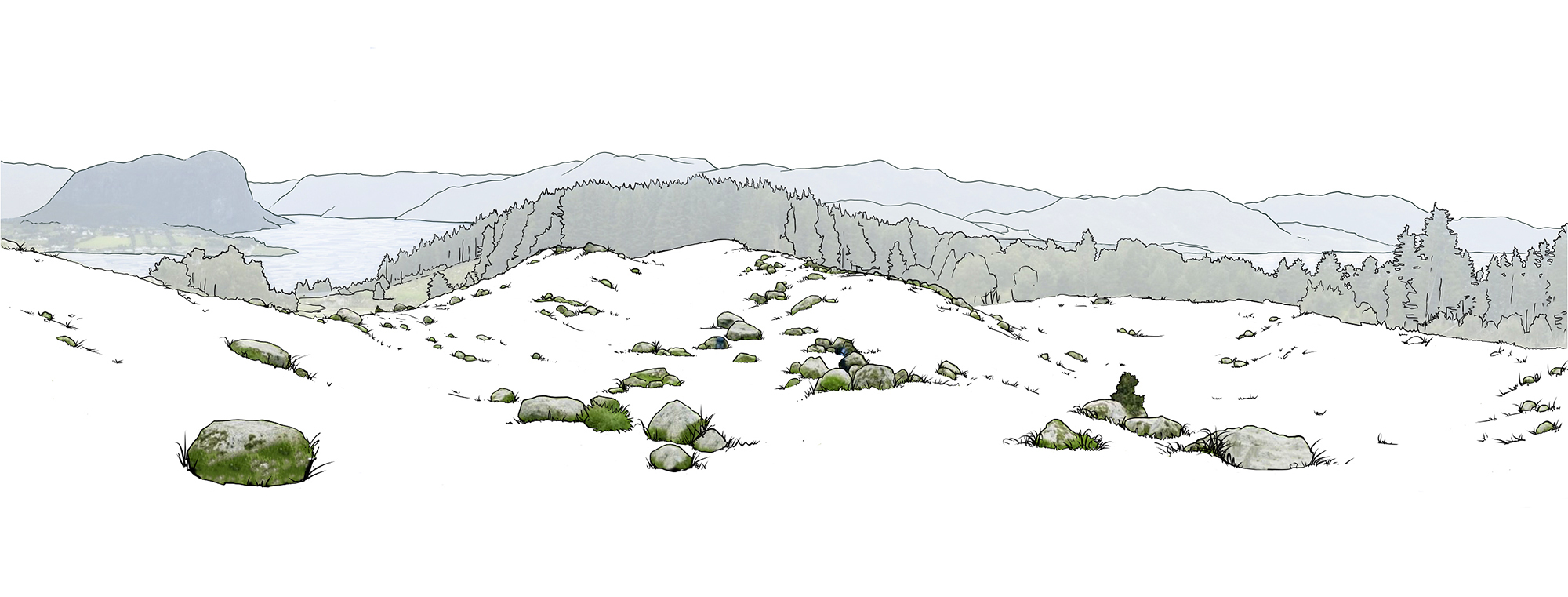
Earth warmed tremendously after the last ice age, but why did the climate reverse course and cool down in the middle of this warming?
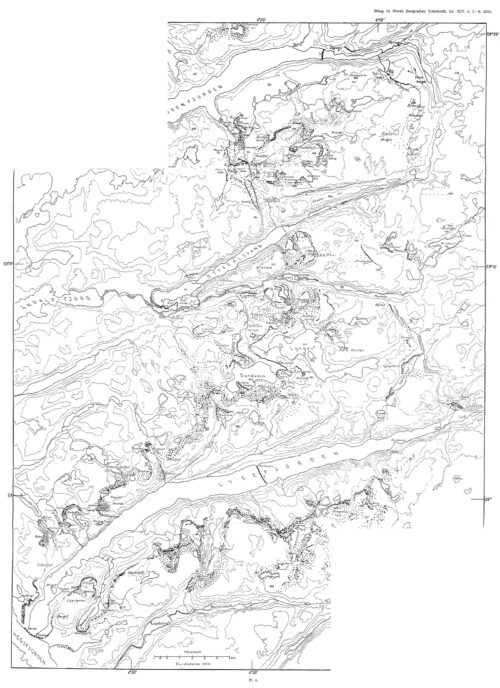
Bjørn Andersen first mapped the moraines in Lysefjord, Norway in the 1950s.
Climate Scientists Tricia Collins & Katie Westbrook on building on the pioneering work of Bjørn Andersen & George Denton
Retracing the extent of ice sheets is a powerful way to understand how Earth’s climate system responds to change. In Norway, the glacial landscape preserves key evidence of past ice margin positions in the form of moraines—ridges of rock and sediment deposited at the edge of an ice sheet. These landforms are clues to a mysterious cold reversal that briefly interrupted the significant warming that ended the Last Ice Age.
Our research builds on efforts that began in the 1950s by Bjørn Andersen, who first mapped moraines throughout southwestern Norway. George Denton joined Andersen in 1966 and the two conducted field seasons together over the years all over the world. Throughout their travels, they observed similar moraines leading them to puzzle over how the behavior of the Scandinavian Ice Sheet compared to that of other ice sheets and mountain glaciers. Their observations raised the question: Was the cold reversal during the termination of the Last Ice Age globally synchronous?
In 2011, Andersen revisited the region with Aaron Putnam, to collect samples for beryllium-10 surface exposure dating from key moraines around Lysefjord. Andersen had long thought that the Lysefjord moraines looked strikingly similar to moraines he had observed in New Zealand. Though he would sadly not live to see the results, Andersen was proved right. The Lysefjord moraine ages came out to be almost identical to the moraine ages of New Zealand.
In 2023, we returned to the Lysefjord region to expand this record. By applying beryllium-10 surface exposure dating to glacially-deposited boulders, we’re working to build a more robust timeline of ice sheet behavior during the entire termination of the Last Ice Age. This chronology will span across the initial warming, the cold reversal, and the resumption of warming. Understanding whether this climate reversal occurred at the same time across both hemispheres will offer important clues about the global climate mechanisms that drove it.
— Tricia Collins & Katie Westbrook, School of Earth and Climate Sciences, The University of Maine
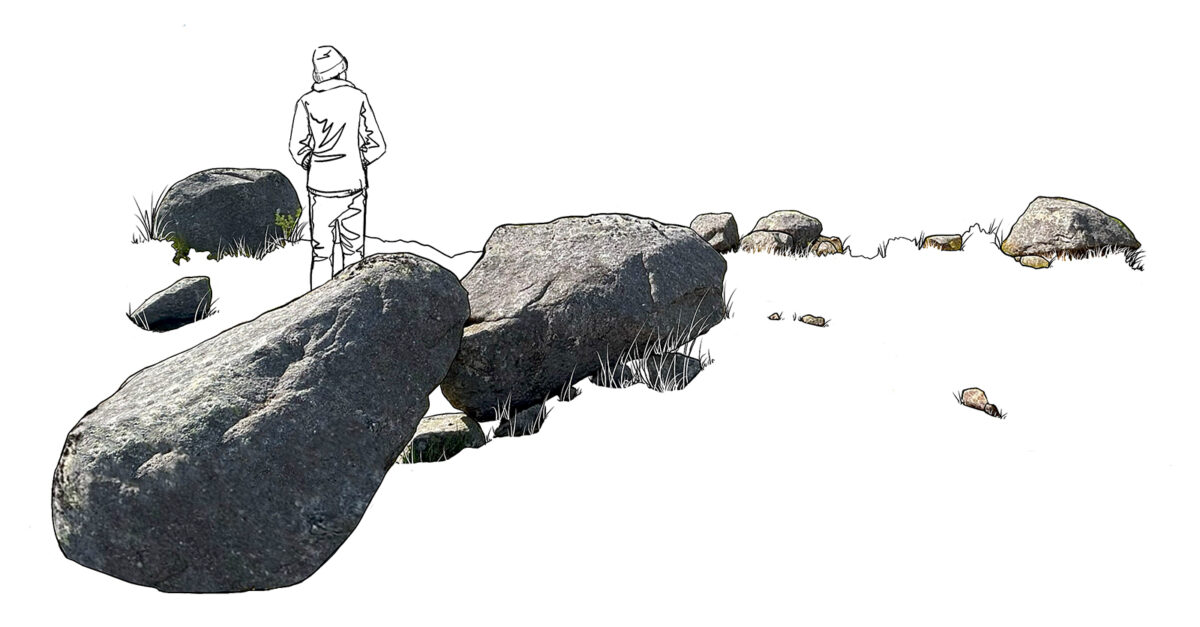
I. Highland Plateaus
The highland plateaus around Lysefjord were a place where the ice could spread out without being hemmed in by the high fjord walls. This allowed for several moraines to be preserved when they would otherwise have been easily overprinted, giving us a chance to look in greater detail at ice fluctuations. Moraines are produced as a stable ice front sits in the same position for some time, churning out sediment and boulders that eventually build a ridge. By calculating the time that these moraines were deposited, we can pinpoint where the ice front was in space and time.
We scaled the over 500-meter plateau along the southern side of Lysefjord each day for a week, coming back down with packs full of rock samples. Our legs were quite tired! We collected samples from boulders that were deposited on the top of moraine crests, right when the ice pulled back from that location.
The views were incredible, with the exception of the day we spent entirely within a cloud, and the bogs were wet. We learned quickly to bring a fresh pair of socks and plenty of cookies for a midday break.
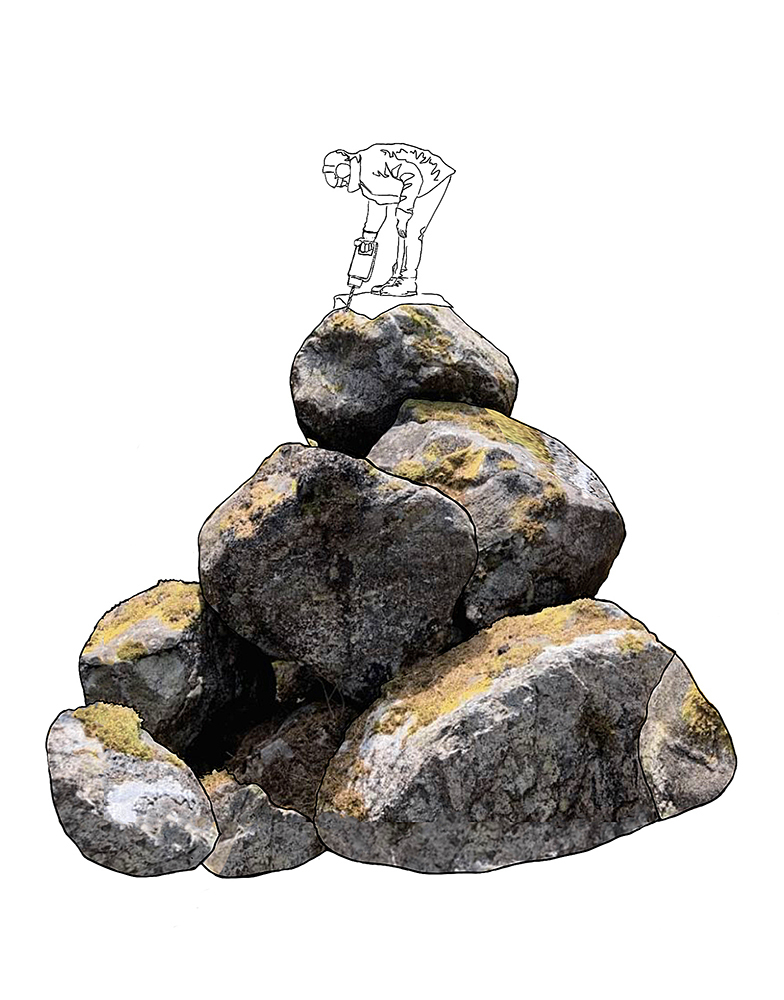
II. Moraines & Trolls
The area around the mouth of Lysefjord hosts several moraines bracketed by erratic boulders on either side. This geomorphological configuration offers a high resolution look at the timing of retreat and advance in this area.
Much of this region is pasture land for cattle and sheep. Most of the glacial features were left intact, however, special care was taken to avoid regions modified by humans. Very large and deeply embedded boulders are characteristics of untouched landforms.
This area also hosted sections of boulder moraines. These are formed in the same way as traditional moraines, but are lacking fine grained material. They can still be sampled and interpreted all the same, but are fascinating to observe! The famous Trollgaren moraine in Norway is translated to “Troll Fence” in English. Before a geologic explanation, locals once believed the strange features were created by trolls.
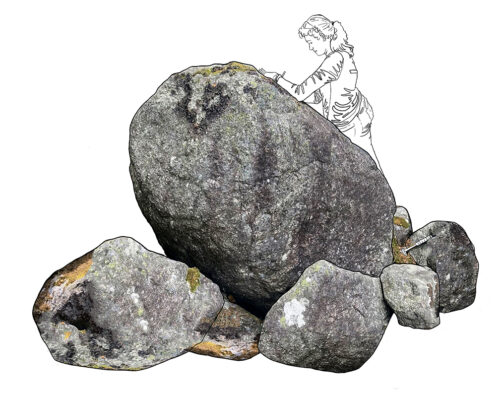
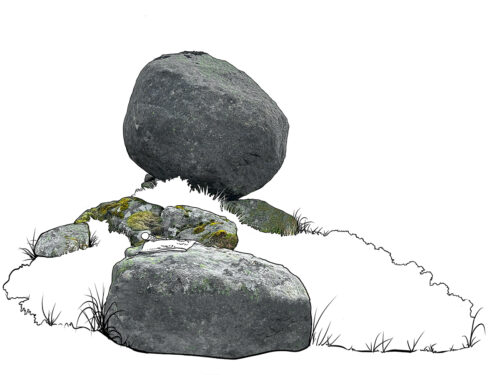
III. Erratic Boulders
Erratic boulders are deposited as the ice retreats, leaving boulders perched directly on glacially smoothed bedrock. We collected samples from erratic boulders from bedrock hills near the mouth of Lysefjord, the highland plateaus, and bedrock benches farther inland.
We combine deposition ages that we calculate from moraines with those from erratic boulders to get a fuller picture of when the ice was retreating versus standing still or even readvancing.
What did we learn?
The Last Ice Age terminated ~18 thousand years ago, as the Earth began to warm drastically. This rapid warming was enough to cause the world's continent-sized ice sheets to disintegrate as the ice began to melt. One of the big mysteries we were trying to clarify with this research is about the extent and timing of an interruption in the abrupt warming following the Last Ice Age. The warming was interrupted 14.6 thousand years ago in the Southern Hemisphere, leading to a colder climate, before resuming the warming trend about 2 thousand years later. Did this cooling trend happen at the same time in the Northern Hemisphere, or are the hemispheres not in sync? Our initial results show that the ice rapidly retreated up Lysefjord as the termination was underway, dropping erratic boulders as the ice front disintegrated. But, the ice appears to have made a dramatic comeback and surged back to deposit moraines around the mouth of Lysefjord and on the highland plateaus. Interestingly, our results show that this re-advance of ice occurred right around 14.7 thousand years ago, suggesting a synchronous global climate reversal.
Why this cooling reversal happened is an open question, but our improved understanding of globally synchronous abrupt climate change can help us learn more about the mechanisms that may be responsible within our climate system. Ultimately, the mechanisms responsible for the abrupt climate changes since the Last Ice Age may be operable in our modern warming world. If we can better constrain how the climate system shifts suddenly from warming to cooling and vice versa, then we will improve our ability to understand future climate conditions.
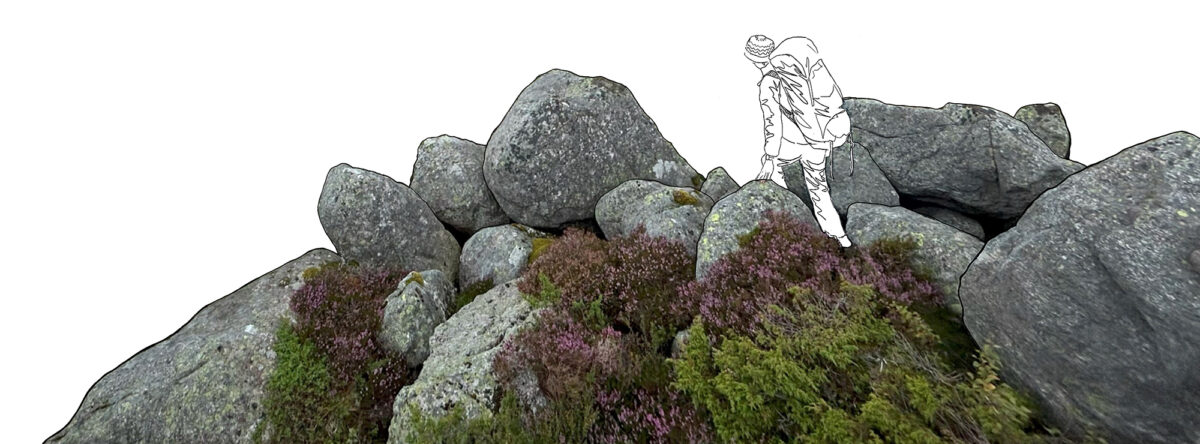
Acknowledgements
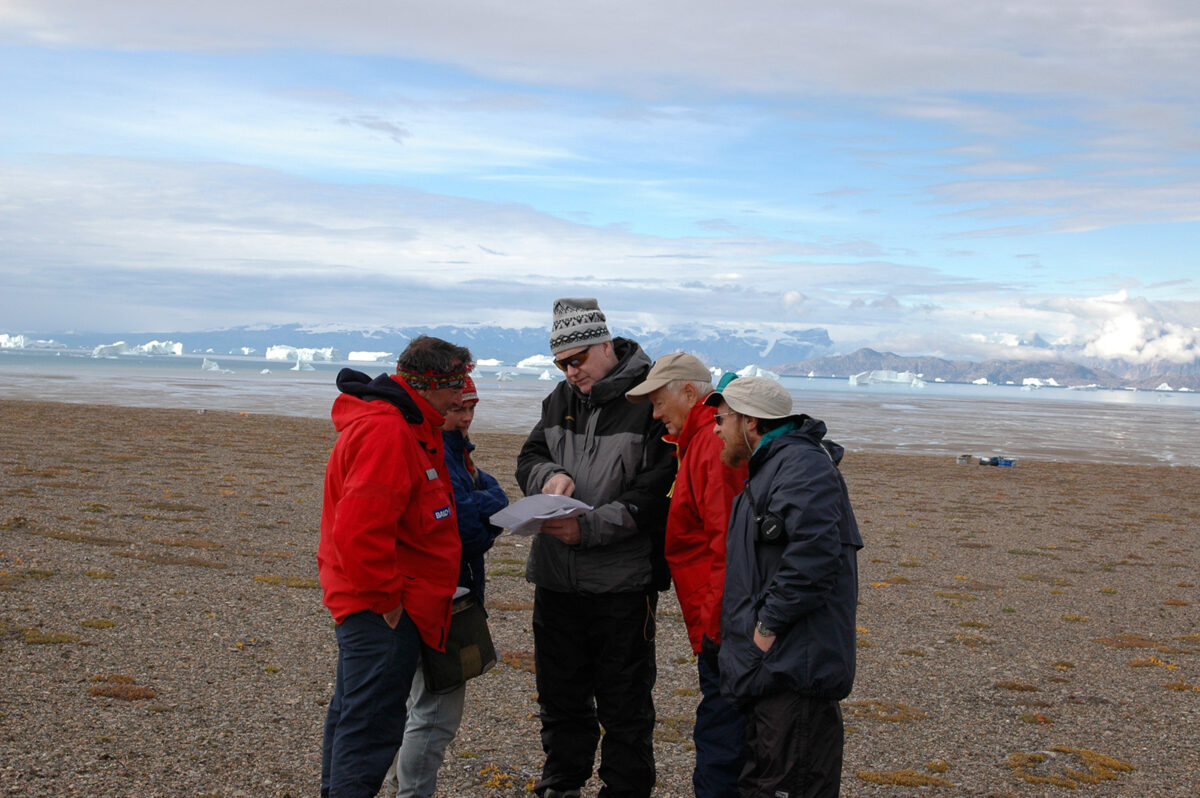
This work would not have been possible without our colleagues, mentors and dear friends, Bjørn Andersen and George Denton, pictured above in Scoresbysund, Greenland, 2005. Members of the field team: Carlo Baroni, Brenda Hall, George Denton, Bjørn Andersen and Richard Alley. Photo by Gary Comer.



